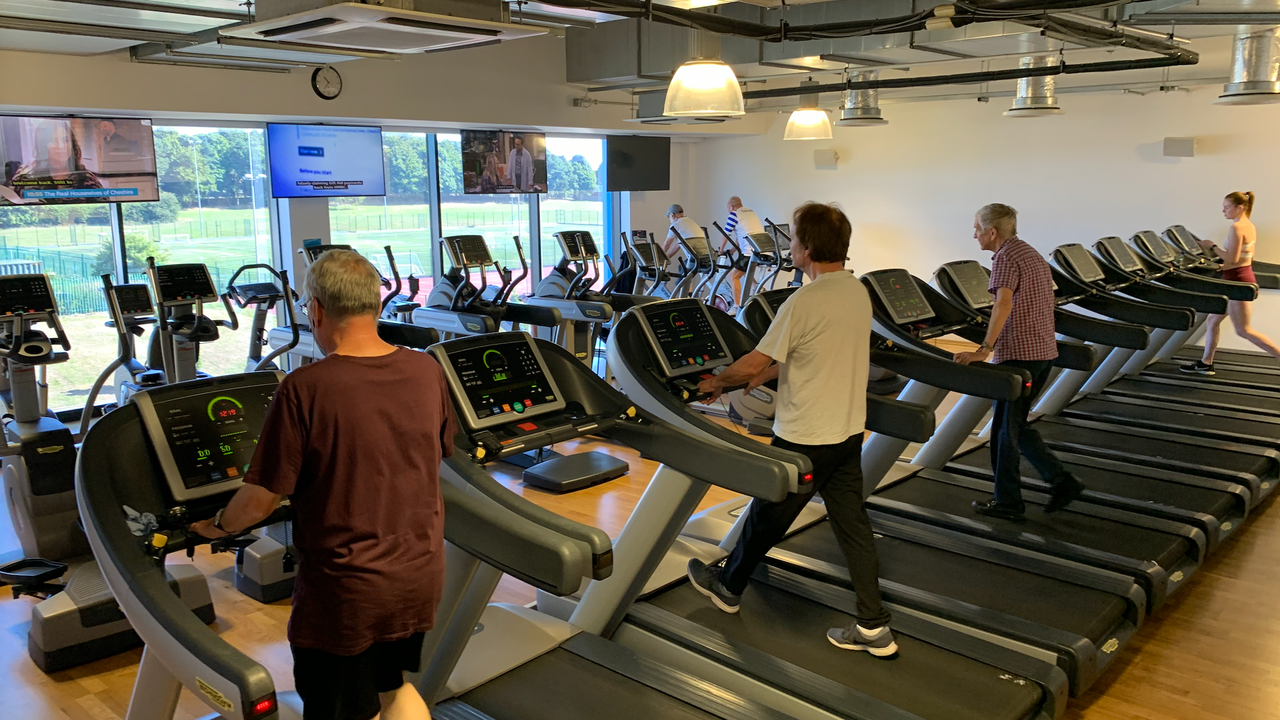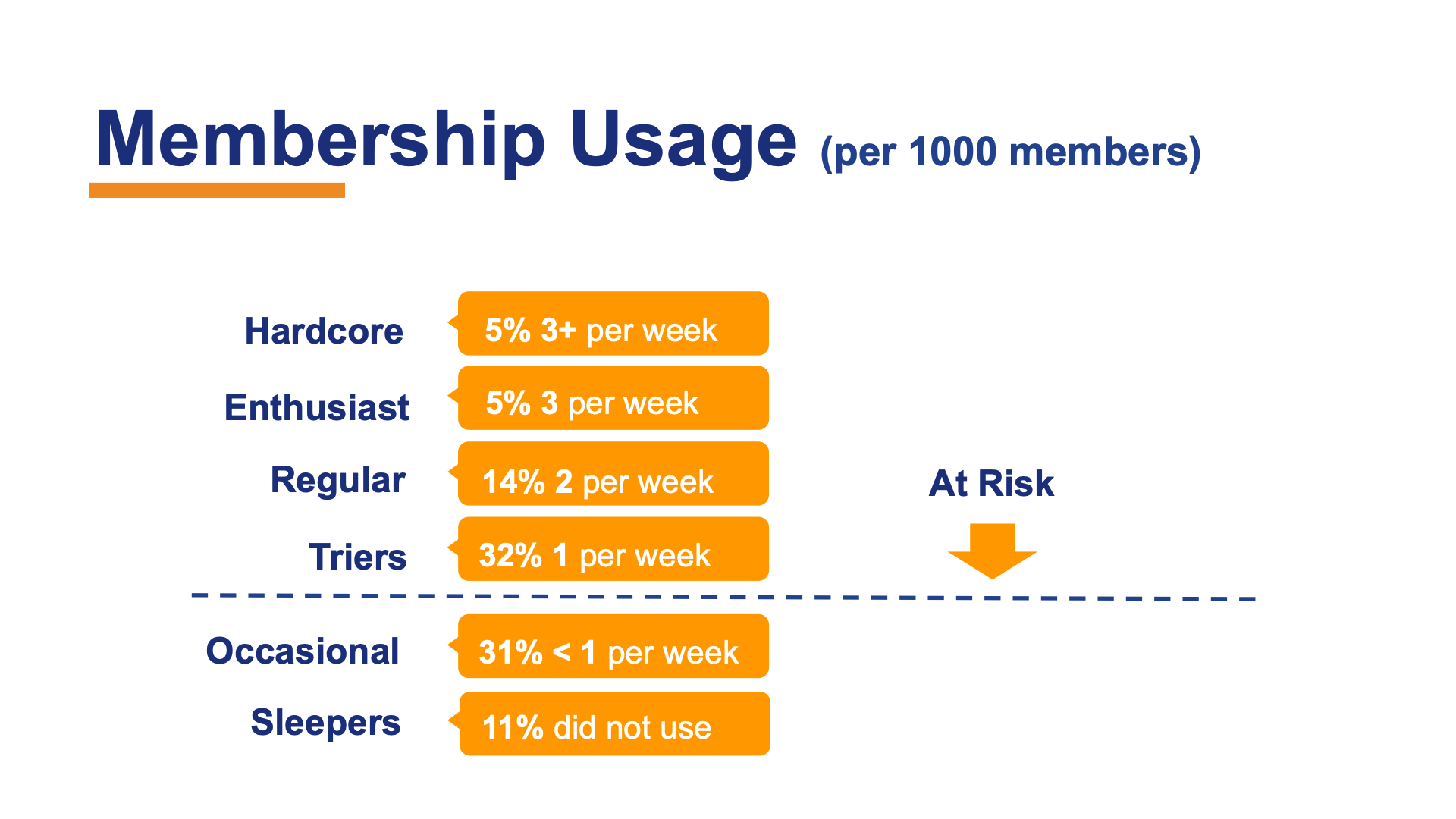Creating an Exercise Identity

Why It Matters, How It Forms, and What Operators Can Do to Shape It
When people join a gym, they often believe they’re making a simple transactional decision: I’m buying access so I can get fitter, stronger, or healthier. But beneath that, something far more significant is happening. Every new member is deciding whether exercise is something they do, or something they can eventually become.
That distinction is critical, because long-term adherence is not driven by motivation, willpower, or even goal-setting, it’s driven by identity. When someone sees themselves as “the kind of person who exercises,” consistency becomes a natural extension of who they are. When that identity never forms, their commitment remains fragile and easily disrupted.
Yet very few operators design member experiences with identity creation in mind. We focus on access, join flows, inductions, and programming, but overlook the deeper psychological transformation that occurs in the first weeks of membership.
This...
Differentiate with Service

How To Create and Implement Minimum Service Standards in a Health Club
In order to have a successful Health Club you need to deliver a standard service to all of your members. Creating and implementing Health Club minimum service standards lets your employees know what you're expecting of them and helps gain loyal members. In this article, we explain what Health Club minimum service standards are and why they're important, list the steps for creating and implementing Health Club minimum service standards and provide you with several examples. Don’t let the term minimum lead you to thinking low service standards. Here the term minimum is a level that service will not fall below. Hotels like Ritz Carlton and the Four Seasons have minimum service standards that are higher than most of their competitors’ best efforts.
What are Health Club minimum service standards?
Health Club minimum service standards define what a Health Club guest or member can expect from their visit to a Health ...
Association of British Climbing Walls (ABC) Retention Presentation
I was delighted to be asked to speak at the Association of British Climbing Walls event at the Magna Science Park in Sheffield. In this keynote presentation I describe what we have learnt in the fitness industry that may help improve retention for climbing wall businesses.
Move Congress - Top 10 Retention factors (short)
I was asked to represent the fitness industry at the physical activity and community sport conference in Budapest in Hungary. I thought I had 90 minutes until I got there when I was told you have 15 minutes. So this is the result.
Below is a transcript of the Move Congress 2019
Introduction
I'm Dr. Paul Bedford. I have a PhD in behavioural psychology, applied to fitness environments. I started in the fitness industry having spent 12 years as a plumber. So by trade I'm a plumber. And then I got into fitness because I was into exercise and I worked in my local YMCA, which is a charitable organization in the UK as a volunteer instructor. They then gave me a job. I moved up through that organization till I was running their facilities and then I've moved on to work in both public and private sector. But there was, I've always been a drive for me to understand why people start, but don't keep going with exercise. So after a number of years, I did a master's degree at City University in ...
Recovering Quickly
In this post I want to focus on how quickly we are actually recovering and what can we do to accelerate that process.
I want to talk about you looking at your own data. I want you to trust in your own data.
There's an awful lot of data and numbers being produced by trade organizations, by operators and also financial institutions and I think you need to be mindful that comparing yourself to some of that is not going to be useful. Just focusing on what what's going on within your business is probably the most important thing you can do right now, rather than trying to compare you to someone else.
Typical club groupings of members, pre pandemic, let's say this is a thousand members. You have your hardcore exercises, your enthusiasts, regulars, irregulars and your sleepers.

Once the pandemic hit, we saw was there was an overnight contraction of the business.
Within that, we came up with our descriptions, we talk about hard core exercises by visit frequency.
Then you have the enthu...
8 Essential Planning Steps to Kickstart your Retention
Your business is constantly experiencing change. Whether caused by the global pandemic, fitness trends, new technology implementations, procedural updates, department reorganisation, or customer/member service improvements, change is constant and necessary for growth and profitability.
Developing a consistent approach to the measurement and management of your retention processes will aid in maximising the impact it has on your customer/member s and staff.
One of the most common challenges operators describe to us about tackling retention, is there are so many things they could do, but they don’t know where to start. What should take priority, what will have the biggest impact and what will be the easiest to deliver.
In this blog I will talk about the planning and communications required to develop a successful retention plan.
1. Begin with the End in Mind
Yeah one of Stephen Coveys seven habits, but it’s a concept that has been around since the beginning of time. Since most chan...
Club Industry 2020 - Retention In a Time of COVID
This is the 20 minute session I pre recorded for Club Industry 2020
Escape Your Limit Podcast - What's the difference between retention and attrition?
Retention is the period of time between when someone joins and they either stop exercising or when they stopped paying. Depending upon the markets we work in, it depends which one of those two or if we measure both.
Attrition is the number of people that cancel from your business. So one is measured in months and the other is measured in people, so they're not the opposite of one another, Like many people think. They're related, but then they are separate measures completely.
Lots of people say, oh well if your retention is this, then your attrition is the opposite.
We use traditional statistical analysis that's found in medicine insurance companies to actually track and plot what people are doing. Some of the things that the Fitness industry use to measure attrition just have no value. You might as well measure the size of a room with an ice cream.
Retention needs to be measured in people, not percentages.
The approach that's most appropriate, is called survival analysis. Survival an...
A 12 Month Randomised Control Trial to aid Exercise Retention

Retention has been a key business issue in the fitness industry since the first retention report produced by Dr Melvyn Hillsdon in 2000. This was the first report on the topic to use scientific methods for reporting what was actually going on within clubs. Subsequent reports began to unravel the behaviours of members during the adoption and maintenance phases of membership. A key element identified early in the reports was that members who visited their club at least once per week in the first four weeks were more likely to stay members over the longer term.
As a result of this many operators rushed to develop gym induction systems forcing members to attend multiple appointments to ensure this four visit frequency. Little thought was given to the content of the inductions beyond extending the amount of equipment that was introduced. This lead to inductions processes that increased time with an instructor to 2-5 hours over multiple appointments. Little consideration was given to the ne...
Budget Gym Charges Premium Prices

I have spent much of the last fifteen years standing in gyms talking to members about their expectations and realities of the health club experience. In the week leading up to Easter I was once again on the gym floor. Three days of interviewing in three sites across the country. While the interviewing had a specific focus much of the insight gained from members whilst they exercised had remained the same. To few interaction if any with the staff, little support on the development of exercise programmes and beginnings of a trend to get support from the internet rather than from a member of the fitness team.
On day one while interviewing one member I asked one of the standard questions I ask. When was the last time an instructor spoke to you? The response was somewhat alarming. You were. You were the last person to speak to me, the last time you were in the gym doing this stuff. They were right I had been in this particular gym four years ago and i had spent time interviewing members I ...


